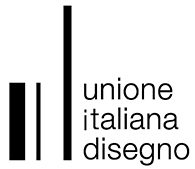edited by Maria Grazia Cianci, Balmori Associates, Darío Álvarez Álvarez
“The eye sees the world, and what it would need to be a painting, sees what keeps a painting from being itself, sees –on the palette– the colors awaited by the painting, and sees, once it is done, the painting that answers to all these inadequacies just as it sees the paintings of others as other answers to other inadequacies. It is no more possible to make a restrictive inventory of the visible than it is to catalog the possible expressions of a language or even its vocabulary and turns of phrase. The eye is an instrument that moves itself, a means which invents its own ends; it is that which has been moved by some impact of the world, which it then restores to the visible through the traces of a hand.” (M. Merleau-Ponty, L’Oeil et l’Esprit [Eye and Mind], Paris 1964).
The representation of landscape is not an easy matter to approach, given the polysemic nature of the concept of landscape, whose boundaries appear dilated; however, in the era we are living in, it is necessary to address the issues that this subject can touch upon, investigate its competencies and practices, and deepen our knowledge of the contemporary landscape, while also expanding its boundaries and disciplinary contexts.
Landscape representation may make use of more documentary and descriptive contributions, as well as those more explicitly expressive and communicative, in approaching the subject from the point of view of ‘good’ as ‘enhancement’, as well as from the point of view of ‘image’ as ‘communication’.
Posing the problem of the existence of methods capable of bringing out the many elements that make up a landscape can open up interesting and profound considerations on studies, experiences, and tools capable of reproducing the structuring but also the variable elements of each type of landscape.
The descriptions of a landscape, the individuation of the process essential for the knowledge and preservation of data, and the interpretation of meanings regarding transformations of the landscape are indispensable testimonies for the knowledge of a place.
Similarly, contemporary representations for landscape design and imaginary drawings resulting from the inventive process testify to the expressive graphic value in which representation moves in a given socio-historical period.
Issue 15 of the journal diségno addresses scholars of these subjects, inviting reflection on the relationship between representation and landscape, between description and interpretation, and between ‘being inside’ and ‘being outside’ the landscape. Therefore, the themes to be dealt with go from historical research, theoretical studies, technical and methodological experiences, application experiments, and contemporary references to significant cases involving landscape and its representation, included within the four possible topics indicated in this call for papers.
Focus 1 The representation of landscape in relation to historical and cultural heritage
Focus 2 The representation of landscape through procedural operations highlighting instrumentation and methodologies
Focus 3 The representation of landscape through imaginary drawings and utopian visions
Focus 4 The representation of landscape in contemporary design
Abstract submission: May 15th, 2024
Notification of acceptance: June 7th, 2024
Full paper: July 31st, 2024
Notification of final acceptance: September 15th, 2024
Revised full paper in English: October 15th, 2024
